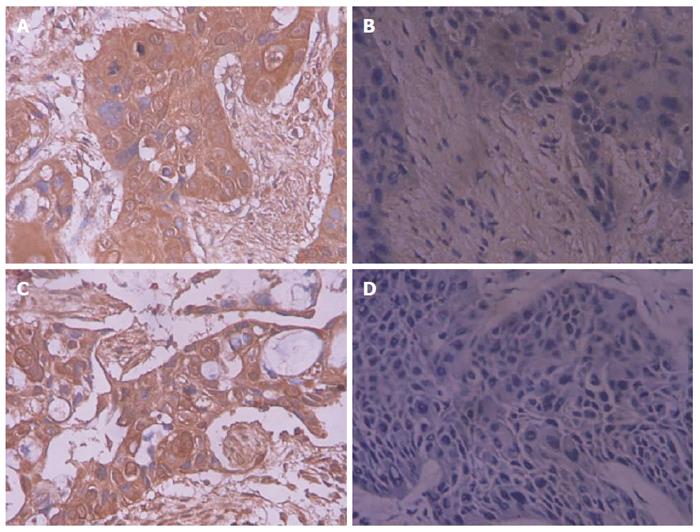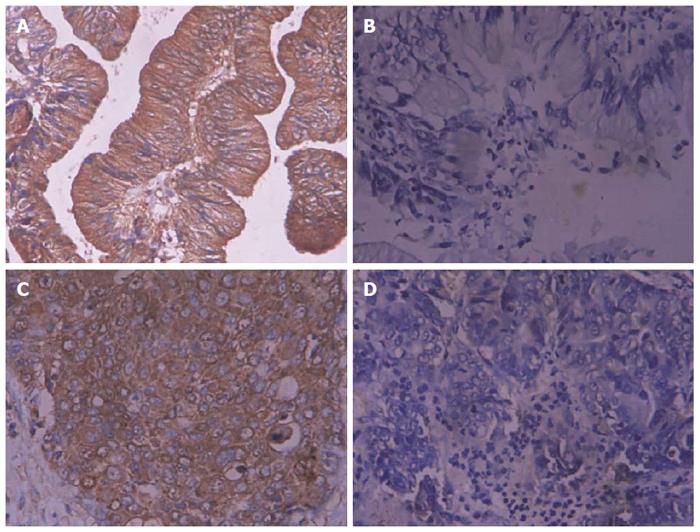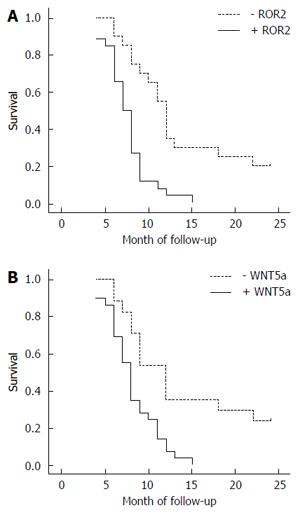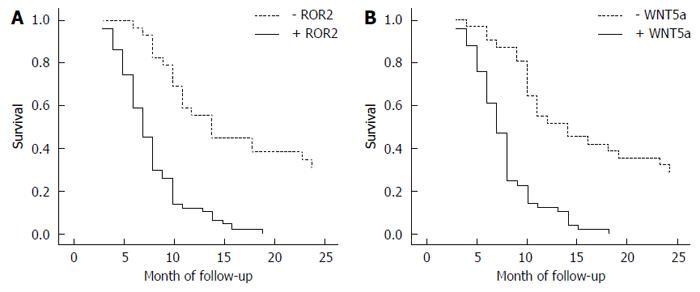Copyright
©The Author(s) 2017.
World J Gastroenterol. Apr 14, 2017; 23(14): 2601-2612
Published online Apr 14, 2017. doi: 10.3748/wjg.v23.i14.2601
Published online Apr 14, 2017. doi: 10.3748/wjg.v23.i14.2601
Figure 1 EnVision immunohistochemical staining of squamous carcinoma and adenosquamous carcinoma.
A: Positive expression of ROR2 in moderately differentiated squamous carcinoma (SC); B: Negative expression of ROR2 in moderately differentiated SC; C: Positive expression of WNT5a in moderately differentiated adenosquamous carcinoma (ASC); D: Negative expression of WNT5a in poorly differentiated ASC. Microscopic view at × 200.
Figure 2 EnVision immunohistochemical staining for adenocarcinoma.
A: Positive expression of ROR2 in highly differentiated adenocarcinoma (AC); B: Negative expression of ROR2 in highly differentiated AC; C: Positive expression of WNT5a in highly differentiated AC; D: Negative expression of WNT5a in poorly differentiated AC. A and C: × 200; B and D: × 400.
Figure 3 Survival curves for squamous/adenosquamous carcinoma.
A: Positive and negative expression of ROR2 in squamous/adenosquamous carcinoma (SC/ASC); B: Positive and negative expression of WNT5a in SC/ASC.
Figure 4 Survival curves for adenocarcinoma.
A: Positive and negative expression of ROR2 in AC; B: Positive and negative expression of WNT5a in AC.
- Citation: Wu ZC, Xiong L, Wang LX, Miao XY, Liu ZR, Li DQ, Zou Q, Liu KJ, Zhao H, Yang ZL. Comparative study of ROR2 and WNT5a expression in squamous/adenosquamous carcinoma and adenocarcinoma of the gallbladder. World J Gastroenterol 2017; 23(14): 2601-2612
- URL: https://www.wjgnet.com/1007-9327/full/v23/i14/2601.htm
- DOI: https://dx.doi.org/10.3748/wjg.v23.i14.2601
















